What You Need to Know About Diamond Clarity
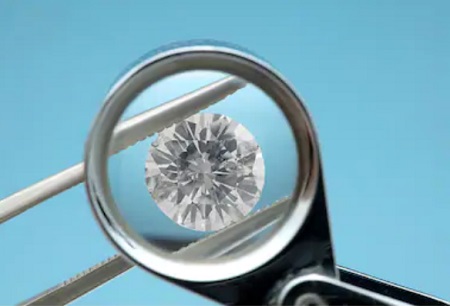
Did you know that the majority of polished diamonds have imperfections in them? In fact, flawless diamonds (FL clarity) are so rare that many professionals in the trade would never see one in their lifetime.
In a grading report, the clarity grade is established based on the collective effect of blemishes and inclusions (clarity characteristics) on the diamond. Obviously, the fewer imperfections a diamond has, the higher the clarity grade it receives.
One of the biggest mistakes of buying a diamond is to have a misguided belief that a higher clarity grade will translate into a diamond with better sparkle and brilliance.
Personally speaking, I rank clarity as the least important attribute amongst the 4Cs. Out of the 4Cs, cut and carat are attributes that are most readily observable to a casual viewer.
On the contrary, a person looking at an engagement ring without a loupe would be hard pressed to discern any differences between a VVS1 diamond and an eyeclean SI1 diamond.
The truth of the matter is, unless a diamond is severely included, clarity grades do not have much bearing on the stone’s visual appearance. From a practical viewpoint, why should you pay more for a feature that can’t be “seen”?
Misconceptions That People Have About Clarity
When it comes to clarity, there are basically two different camps that consumers fall into. The first group consists of people who are looking for value buys and don’t mind shopping for diamonds in the lower clarity ranges.
The other group consists of people who will shop for high clarity grades and will settle for nothing less than a VVS2 clarity grade or a “perfect” internally flawless diamond.
In both groups of consumers, I always come across the same misconceptions and questions that readers send via email. Let me start with the latter group first.
First time shoppers with no prior experience are usually the ones who select stones way high up on the clarity scale. This is due to a misguided belief that a diamond with lesser inclusions will be more beautiful and that inclusions are a bad thing.
Well, let me set the record straight by saying that cut is KING. Not clarity, not color. Unless you have symbolic reasons for getting an internally flawless diamond, you are simply wasting your money with high clarity grade diamonds when an eyeclean VS2 diamond would look identical to the naked eye.
Inclusions Can Actually Be a Good Thing!
Compared to rare and expensive flawless diamonds, the presence of inclusions in lower clarity diamonds makes them a lot more affordable. Besides lower prices, there is another added benefit of having inclusions.
Did you know that inclusions are like fingerprints? They make each diamond unique and special. Since no two diamonds are alike in terms of their inclusion types and location, this knowledge can help you identify your diamond if you ever need to leave it at a jeweler for repairs or other reworks.
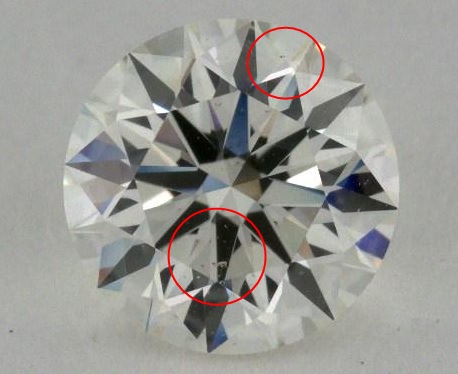
Inclusions (circled in red) can help you identify your diamond.
Most diamonds with GIA clarity grades of VS2 and above don’t have flaws that are visible to the unaided eye (eye-clean). This means that you will only be able to notice inclusions with the aid of a 10x magnification loupe and not in the typical everyday environment.
If you can’t see the inclusions with your naked eyes, do you really need to pay more just to buy a higher clarity diamond? Give some thoughts to this question and leave a comment below to tell me what you think.
“SI Diamonds Are Always Eyeclean.” NOT!
Now, let’s touch on the other group of people who like shopping for diamonds at lower clarity grades. There is a common misconception that SI diamonds are always eyeclean because of misinformation from jewelers and other online sources.
So, let me set the record straight here. Slightly included (SI1-SI2) diamonds aren’t always eyeclean. If your jeweler is making a blanket statement that they are, it’s time to rethink who you are doing business with and buy from someone who is more competent.
The fact is, even a VS2 clarity grade may not be enough to guarantee eye-cleanliness especially if you are buying large diamonds (bigger than 1.50 carats). When you are shopping for a diamond in lower clarity grades, magnified videos of the diamonds in a neutral lighting environment will enable you to assess eyecleanliness easily.
On a fundamental level, clarity is graded based on a combination of 5 factors: size, types, location, color and amount of inclusions present in the stone. As a result, 2 stones with the SAME GIA clarity grade can look totally different in terms of their inclusions.
For example, did you know that there are SI2 diamonds that are actually in the higher band of the grade? This gets them very close to an SI1 grading. Likewise, an SI2 diamond could also be at the lower band of the grade which gets them very close to being an I1.
Real-Life Examples of SI2 Diamonds Graded by GIA
Below are 4 randomly selected 1-carat sized SI2 diamonds that are graded by GIA. To see more details and interact with the diamonds using 360° videos, click on the respective images below.
Based on clarity alone, which of the diamonds would you choose?
Sometimes, a diamond with a clarity of SI1 clarity might not be better looking than one with SI2 clarity. It depends on the nature and location of the inclusions. A big, dark colored inclusion that is positioned in the center of an SI1 clarity diamond will make it less desirable than another SI2 diamond that has inclusions spread unnoticeably across its face.
Even though the inclusions plotted in a grading report may look similar (e.g. 2 similar looking feathers or crystals), one could be dark and obvious while the other could be transparent and well hidden.
Whether you shop online or in a physical store, always request the jeweler to show you the inclusions under a microscope (preferably) or a loupe regardless of what the lab report says. If he/she is unwilling to let you examine the diamond under magnification, chances are, the jeweler is hiding something from you. You need to be smart and walk away.
If there’s only one thing to take back, it is the point that every diamond is different and NOT all the inclusions are the same. You should always double check details before committing to a purchase.
Always See Your Diamond Under Magnification Before Purchase
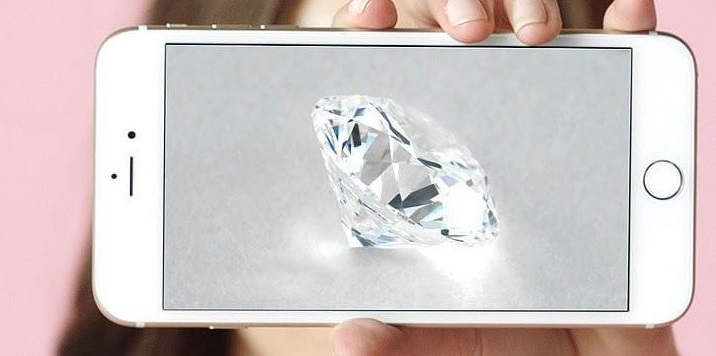
Retailers like James Allen Offer HD videos that enable you to scrutinize diamond details.
A picture tells a thousand words, this is why I would always recommend my friends and readers to start their search at reliable vendors that offer high-resolution videos or and tangible data in their listings.
Having said this, I know there will be readers who are stubborn to good advice and are adamant about buying from mediocre jewelers that expect you to make a shopping decision based on a grading report alone.
Be sure to request a photograph/video of the diamond before you pay a deposit or make a purchase. If photographs are unavailable and you want to take the risk to buy blind, stick to clarity grades of VS2 or better and pray that you don’t regret the decision.
But really, you are asking to get ripped off (and deservedly so) if you decide to shop in this manner despite reading this article.
Here’s something else you need to take note of: Very often, you will see advertisements plastered in malls or magazines that look super enticing. For example, you might see a 1.00 carat ring retailing for unbelievable prices of $499 or massive clear-out sales with prices for engagement rings being slashed by more than 80%.
These are exactly the type of advertisements you need to be wary off as they often mislead consumers looking for cheap buys. You get what you pay for and this is especially true when it comes to diamonds.
In truth, these are sales that are used to offload unwanted and garbage tier uncertified diamonds that lie within the I1-I3 clarity ranges. Chances are, you WILL see ugly inclusions standing out like a sore thumb in diamonds originating from such sales. It’s either that or there are some other hidden problems that involve blatant misrepresentation of the diamond’s quality.
My advice is to STAY AWAY and don’t waste your money on such purchases.
Unless You Don’t Mind Your Diamond Looking Like This…
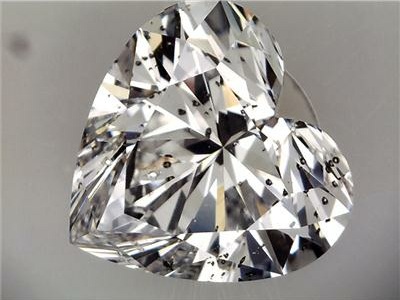
or like this…
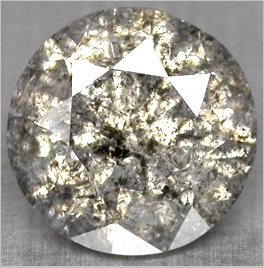
Be smart. When things are too good to be true, they probably are.
Besides clarity, many consumers also get overly obsessed about a diamond’s color grade. Continue reading to find out the truth about diamond color and learn insights that most jewelers would never tell you…

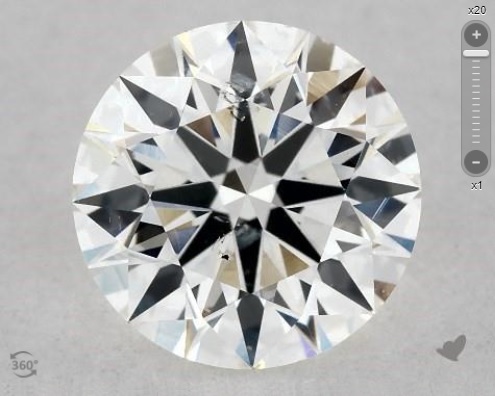
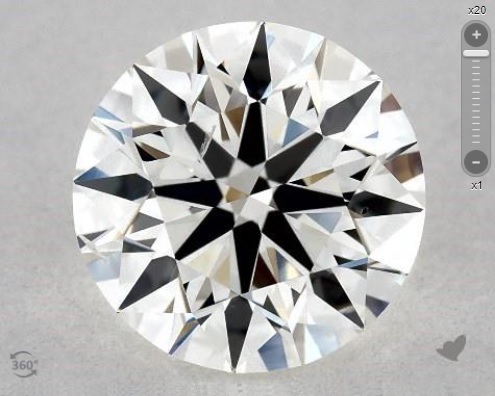
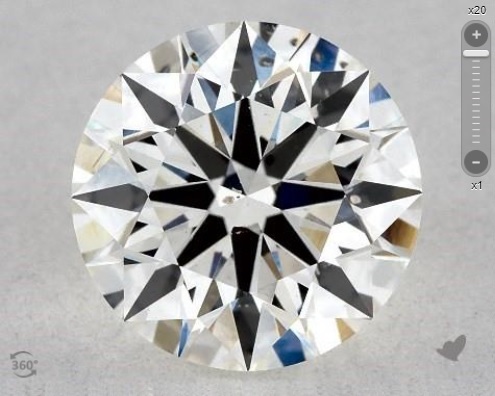
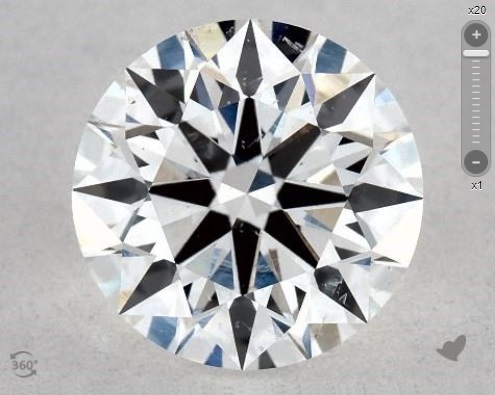
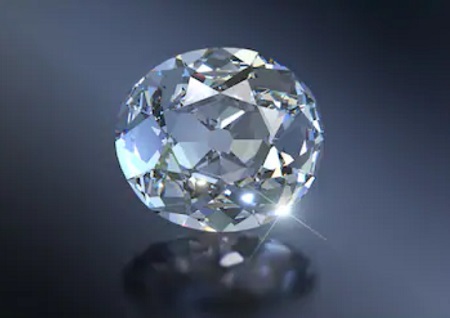
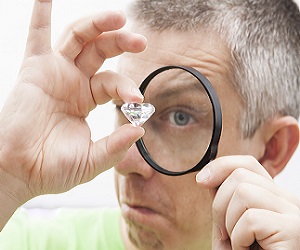











Leave A Comment